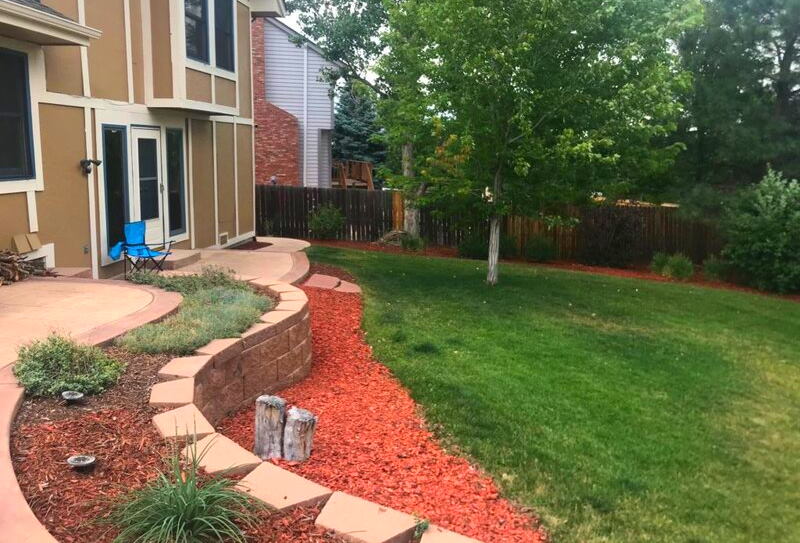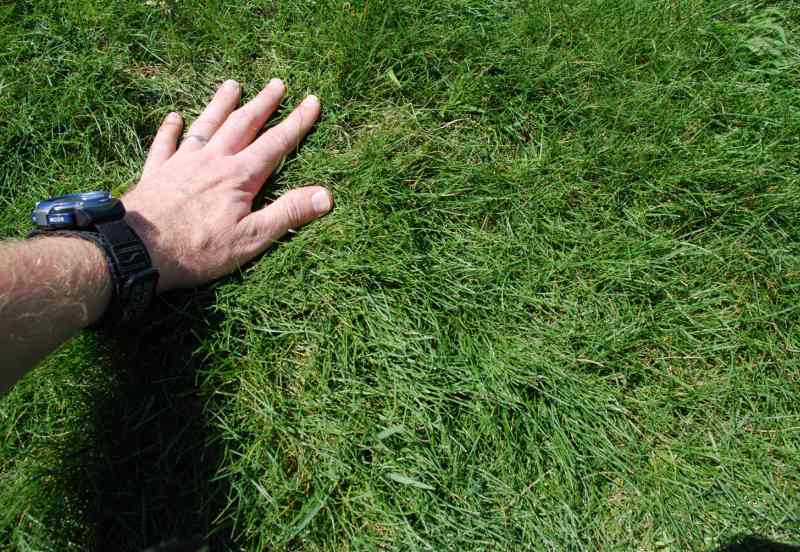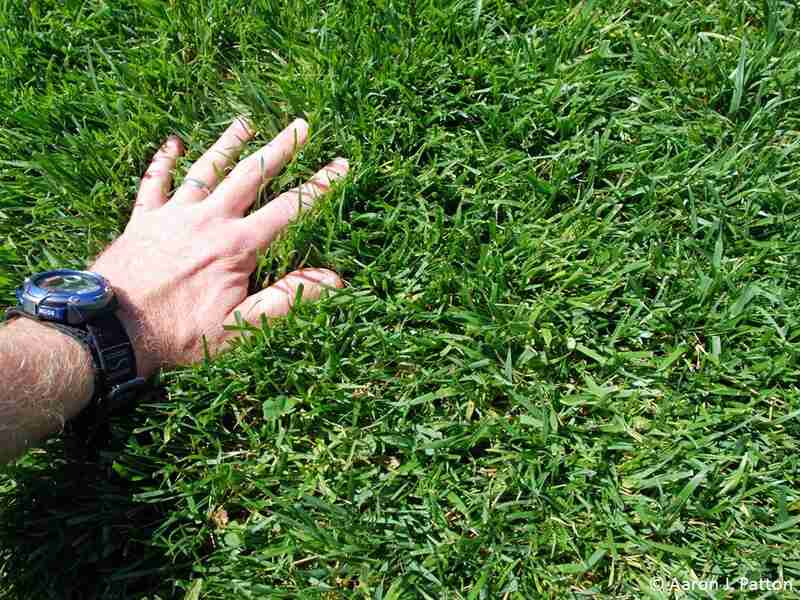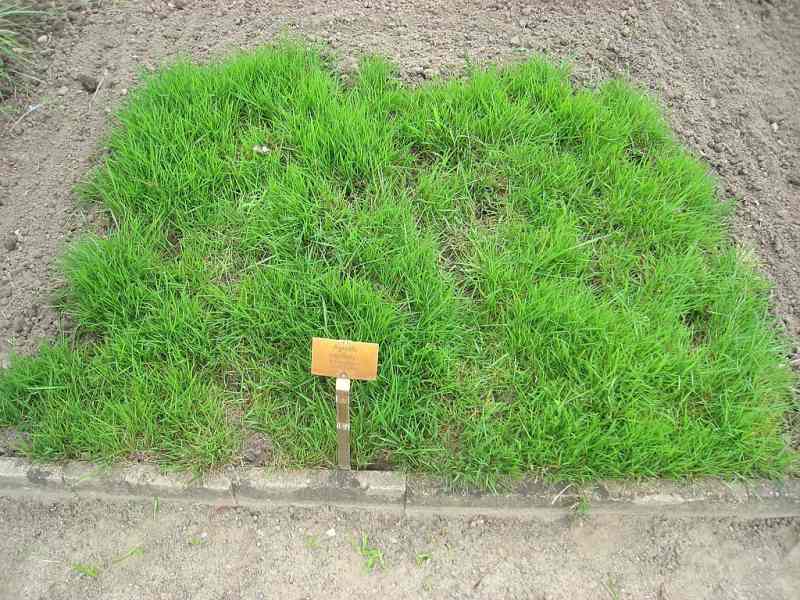5 Best Grass Seeds for Portland, OR
BY ANDRÉA BUTLER | MAY 22ND, 2023 | LAWN CARE, OREGON, PORTLANDPortland’s official nickname may be “The Rose City,” but those sweet-smelling blooms aren’t the only major growers ‘round this way. Turfgrasses are a big, big deal here, too. In fact, the Willamette Valley has a little nickname of its own — the “grass seed capital of the world.” With a reputation like that, securing a fantastically green lawn this side of Oregon should be easy peasy. Achieve those ambitions with the help of our roundup of the five best grass seeds for Portland.
In this article, we’ll cover:
- Warm-Season vs. Cool-Season Grasses
- 5 Best Grass Seed Types for Portland
- FAQs About Portland Grass Seed
- Choose Plant and Grass Varieties for Your Portland Landscape
Warm-Season vs. Cool-Season Grasses
Warm-season and cool-season grasses differ from one another mostly due to their varied biologies, which affect how each one completes photosynthesis. This, in turn, also determines the sort of weather in which each distinct grass type can thrive.
Warm-season grasses include bermudagrass, Zoysia, and buffalograss, to name a few. They like air temperatures up to 95 degrees Fahrenheit because they can turn carbon dioxide into oxygen more readily in hot conditions. Due to their drought tolerance, love of full sun, and dislike of freezing temperatures, these grass types thrive from early summer to early fall.
Cool-season grasses include tall fescue, fine fescue, Kentucky bluegrass, and perennial ryegrass, all of which do well in Oregon. Ideally suited for air temperatures between 65 and 75 degrees Fahrenheit, this grass seed is resistant to frost and has a growing season from fall to early spring.
5 Cool-Season Grasses for Portland, Oregon
Oregon’s cold winters are way too taxing for those warm-season grasses, which are not known to have much of a cold tolerance. That’s why cool-season grasses, and cool-season grasses only, are the right choice for Portland-area lawns.
1. Kentucky Bluegrass

Photo Credit: Brenda Ryan / Wikilawn
There’s nothing better than stepping barefoot onto a thick, soft, carpet-like lawn on a warm, summer day. No wonder homeowners in Portland often want to plant this grass type — not only does it feel incredible underfoot, but it’s also appreciated for its dark green color with a hint of blue at the tip.
A quick note, though: As a standalone turfgrass, Kentucky bluegrass thrives best in the Eastern part of the state, while in Portland, Kentucky bluegrass is best used as part of a blend of perennial ryegrass and/or different types of fine fescues.
It’s also a high-maintenance lawn seed that craves lots of water and sun and is prone to thatch, so be sure you’re up for the challenge.
Classification: Cool-season grass
Spreads by: Rhizomes
Shade tolerance: Low
Drought tolerance: Moderate
Foot traffic tolerance: Moderate
Maintenance needs: Moderate mowing frequency and high fertilization needs
Mowing height: Between 2.5 and 3.5 inches
Potential for disease: Moderate to high; prone to several diseases, such as dollar spot, leaf spot, necrotic ring spot, summer patch, and stripe smut
Soil pH: 6 – 7.5
Soil type: Performs best in well-drained, heavy soils with high fertility
Other notes: In Portland specifically, Kentucky bluegrass works best in a grass seed mix that includes perennial ryegrass and/or varieties of fine fescues. This grass is often used on golf courses.
2. Fine Fescue

Photo Credit: Aaron Patton / Purdue’s Turfgrass Science Program
This type of lawn seed really refers to a number of distinct grass species, including creeping red fescue, Chewings fescue, hard fescue, and sheep fescue, each of which grows differently depending on the environment — some fare better in shade and others in full sun. Color also varies depending on the type of fine fescue, ranging from medium green to dark green.
A low-maintenance option adapted to the Pacific Northwest, fine fescues are typically sold in grass seed mixes, blending sun and shade lovers together for the best lawn outcome. Many seed mixes also include perennial ryegrass for an added germination speed boost. Once established, your new lawn will feel comfy underfoot, as the short, fine blades are soft to the touch. It’ll also be OK for average yard use, just not heavy foot traffic.
Classification: Cool-season grass
Spreads by: Creeping red fescue spreads by rhizomes, while other fine fescues are bunch-type grasses, such as Chewings, hard, and sheep fescues.
Shade tolerance: Moderate to high, depending on species
Drought tolerance: Moderate to high, depending on species
Foot traffic tolerance: Low to moderate, depending on species
Maintenance needs: Low fertilizer and mowing needs
Mowing height: Between 2.5 and 4 inches, depending on species
Potential for disease: Moderate; common diseases include red thread, leaf spot, dollar spot, summer patch, and powdery mildew
Soil pH: 6 – 6.5
Soil type: Will not perform well in wet soil conditions; prefers drier soils and tolerates a wide range of soil types and fertility
Other notes: Adapted to the entire state; does best when mixed with other fine fescues or with perennial ryegrass
3. Turf-Type Tall Fescue

Photo Credit: Aaron Patton / Purdue’s Turfgrass Science Program
With its deep root system and coarser texture, turf-type tall fescue is good for high traffic areas, as it can recover pretty well. Plant this grass seed in September or October, and with proper care, homeowners can expect it to remain green all year long.
Another low-maintenance, disease-resistant lawn seed, turf-type tall fescue is the most resistant to heat and drought than the other cool-season grasses.
Note: It’s not a good idea to mix this type with grass seeds of a finer texture — that can make it too clumpy.
Classification: Cool-season grass
Spreads by: Bunch-style growth habit or rhizomes, depending on variety
Shade tolerance: Moderate; grows well in partial shade and full sun
Drought tolerance: Moderate to high
Foot traffic tolerance: Moderate to high
Maintenance needs: Weekly mowing; low water and fertilization needs
Mowing height: Between 2 and 4 inches
Potential for disease: Tolerant of most diseases when properly maintained; use fungicide to fight brown patch
Soil pH: 5.5–7.5
Soil type: Dry, sandy soil
Other notes: Higher shade tolerance than Kentucky bluegrass and perennial ryegrass
4. Perennial Ryegrass

Photo Credit: Dr Mary Gillham Archive Project / Flickr / CC BY 2.0
This quickly germinating, Oregon-grown grass seed produces bunch-style growth with blades that are a bright green to dark green color. It’s adaptable to many different soil conditions (including clay and poorly drained soils), quite disease-resistant, soft on bare feet, and so durable it stands up well to heavy traffic and can maintain its green color throughout winter. Of the cool-season grasses, it is not the most drought-tolerant or resistant to extreme cold.
Not only does perennial ryegrass work well for a new lawn, especially when mixed with Kentucky bluegrass, fine fescues, and/or colonial bentgrass, but it’s also a top choice for overseeding an existing lawn. Why? Germination can happen in as little as seven to 10 days.
Classification: Cool-season grass
Spreads by: Bunch-type growth habit
Shade tolerance: Low
Drought tolerance: Low
Foot traffic tolerance: High
Maintenance needs: Moderate mowing and fertilization requirements; thatch is not significant
Mowing height: Between 1.5 and 2.5 inches
Potential for disease: High; common diseases include gray leaf spots, red thread, and leaf spot/melting-out
Soil pH: Can grow in soils with a pH between 5 and 8 but prefers between 6 and 7
Soil type: Prefers good drainage and fertility but can tolerate some poor drainage
Other notes: Grown in Oregon and used in most major sporting event fields across the country
5. Colonial Bentgrass

Photo Credit: Daderot / Wikimedia Commons / Public domain
Overtaking practically every other grass type it comes in contact with, colonial bentgrass is fast-growing and well-suited to Portland’s coastal conditions. Despite its seemingly effortless, relentless growth — if you plant a seed mix of colonial bentgrass, perennial ryegrass, and/or fine fescues, the bentgrass will be the dominant grass type within two years — this species is a bit high-maintenance. It’s susceptible to disease and insects, doesn’t do well under heavy foot traffic, and is prone to thatch.
Caring for this soft, bright green grass type involves detaching every spring, mowing low, and watering two to three times a week for the best aesthetics. Colonial bentgrass can withstand drought and cold winters; it just goes dormant and turns brown.
Classification: Cool-season grass
Spreads by: Short rhizomes that may bring about short stolons
Shade tolerance: Moderate
Traffic tolerance: Low
Drought tolerance: Low
Maintenance needs: Moderate to high; best when mowed short, at least once weekly
Recommended mowing height: Between 0.5 and 1 inch
Potential for Disease: Moderate; susceptible to fusarium patch in the winter/vulnerable to take-all patch when young but severity decreases as turf develops
Soil pH: 5.5-6.5
Soil type: Tolerates poor soil conditions, but prefers moist and fertile soil
Other Notes: Colonial bentgrass is naturalized throughout the state because of its ability to dominate other grass types.
FAQ About Portland Grass Seed
Ideally, you’ll want to reseed (or initially seed) your lawn between mid-August to mid-September. The temperatures during this time generally see lows in the 60s and highs in the 80s, and these mild conditions are prime for supporting fast germination. The other option for reseeding falls between early May and mid-June, but germination tends to be slower during this period.
Homeowners looking for a no-mow yard can opt for groundcover plants like sedum, minicolver, Irish moss, sedge, and liriope, to name a few. Or, try an “eco-lawn,” which also cuts down on fertilizer and water usage and limits mowing to once per month. Eco-lawns include wildflower grass mixes, which blend wildflowers with cool-season grasses, such as Kentucky bluegrass and perennial ryegrass.
Rather than planting non-native grass types with more water and fertilization needs, opt for native grasses that are already acclimated to Portland’s climate. In doing so, you’ll also be contributing to cultivating biodiversity, helping prevent erosion, and reducing pollution. Grasses native to the Portland area include blue grama grass (bouteloua gracilis) and Pacific reed grass (calamagrostis nutkaensis).
Choose Plant and Grass Varieties for Your Portland Landscape
Consider your property’s growing conditions while choosing turfgrasses, flowers, and shrubs for your lawn, as shade, sun, and soil tolerance vary per variety. You’ll also want to purchase the grass seed or grass seed mix and other plants that best fit the amount of maintenance you’re willing to do. Not into yard work? Don’t plant Kentucky bluegrass or colonial bentgrass.
Visit places like Forest Park, Leach Botanical Garden, and The Grotto for inspo if you still have no idea where to begin. Of course, you can hire a local lawn care pro for more personalized assistance with maintaining your yard.
Main Photo Credit: The Fields Park in Portland / M.O. Stevens / Wikimedia Commons / CC BY-SA 3.0